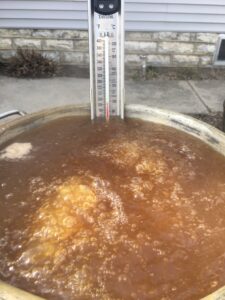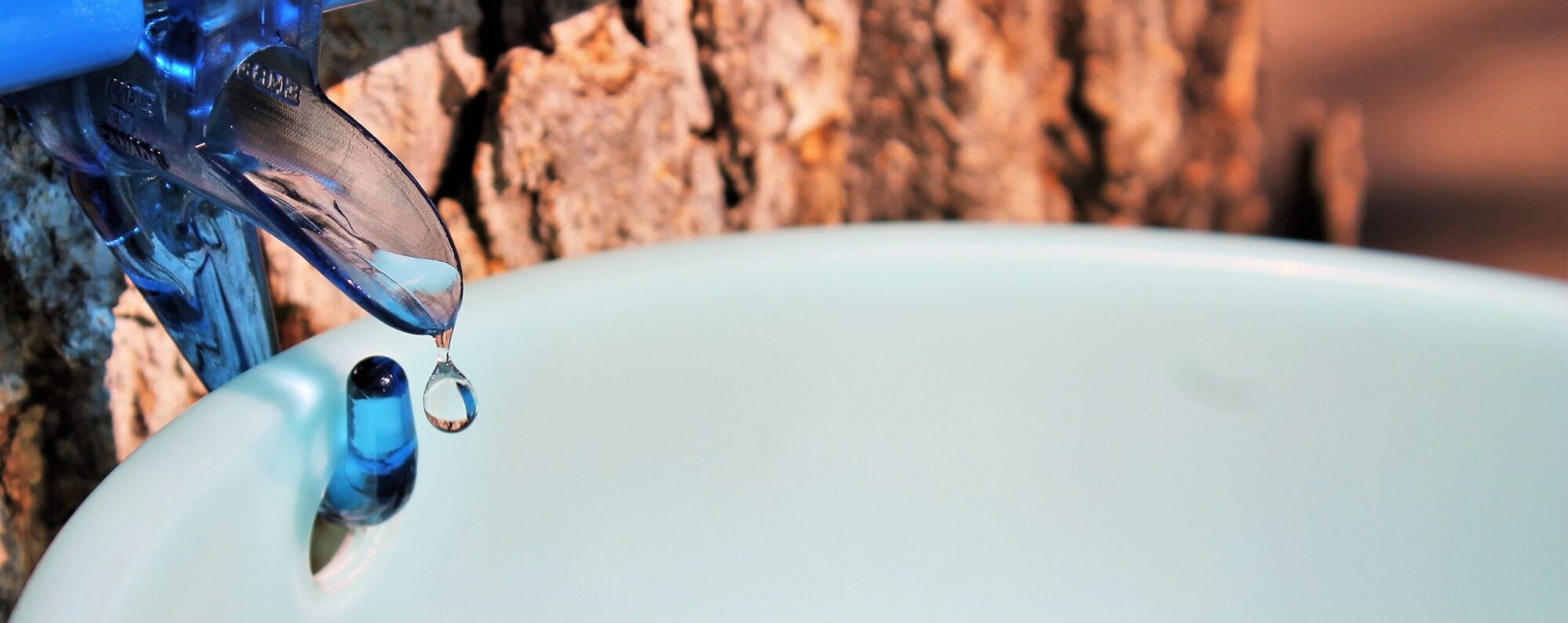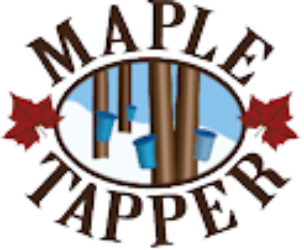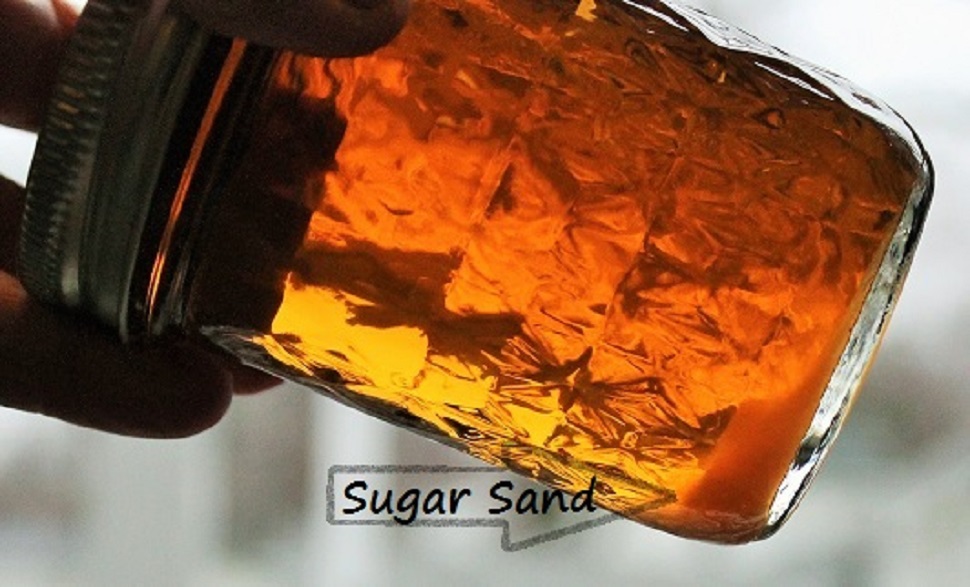
Because the syrup-making process relies so heavily on an accurate temperature reading, it’s best to calibrate your thermometer before each day’s boiling session. Readings can be affected by barometric pressure, by altitude, by mishandling of the thermometer (yes, we’ve all dropped ours!), or even if you’re using a brand new thermometer.
The purpose of calibrating it is to find the temperature at which water begins to boil — normally this is at 212°F for most maple tapping altitudes. (If you live at higher altitudes check online for your normal water boiling temperature.) Once you know your thermometer’s reading, you can then add 7° to determine your syrup’s finish point of 219°F. For instance, if your thermometer shows a temperature of 213°F when water boils, you’ll know it is off by +1°F, so you’ll know to boil the sap to 220°F (as shown on your thermometer). Don’t worry, you’ll figure it out!
How to calibrate a thermometer:
1. Place your thermometer in a pan of distilled water making sure to have 2-inches of room on all sides and up from the bottom of the pan. Make sure you start with enough water to keep your thermometer’s bulb or reading tip submerged for five minutes even as water evaporates.
2. Heat distilled water to a rolling boil. Leave thermometer in boiling water for five minutes, remove from water, and hold at eye level to read temperature.
3. Take note of temperature in relation to baseline: If it is +/- 212°F, add or subtract this range to your finish boil target temperature as described above.
If you get wildly different readings each time you calibrate your thermometer, you can safely assume this thermometer is no longer reliable you should buy a new one.
Our Ultimate Tapping Kit (order here) includes a thermometer like the one shown here — you can also use a digital one or a standard glass thermometer. Just make sure it has marking or readings to one-degrees.



